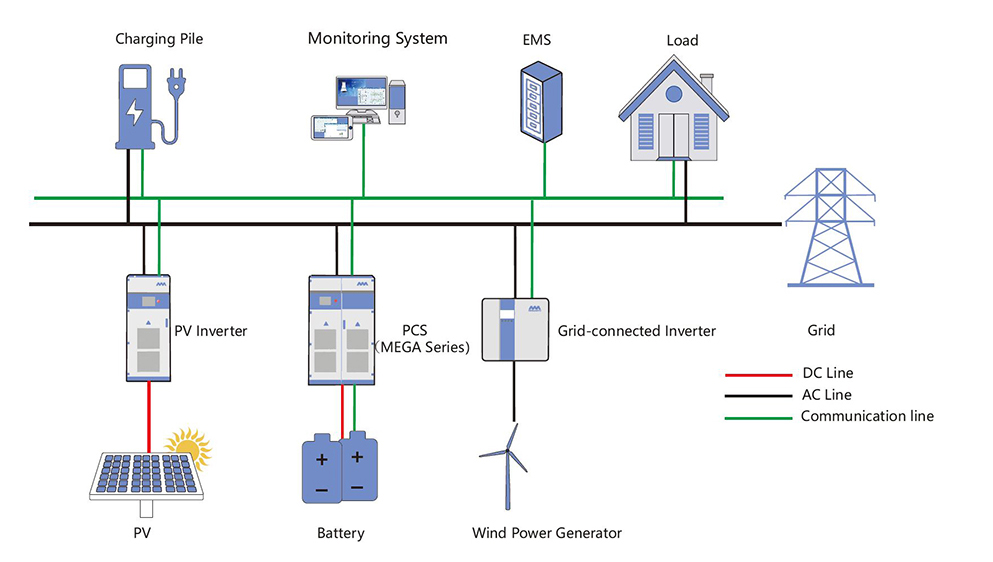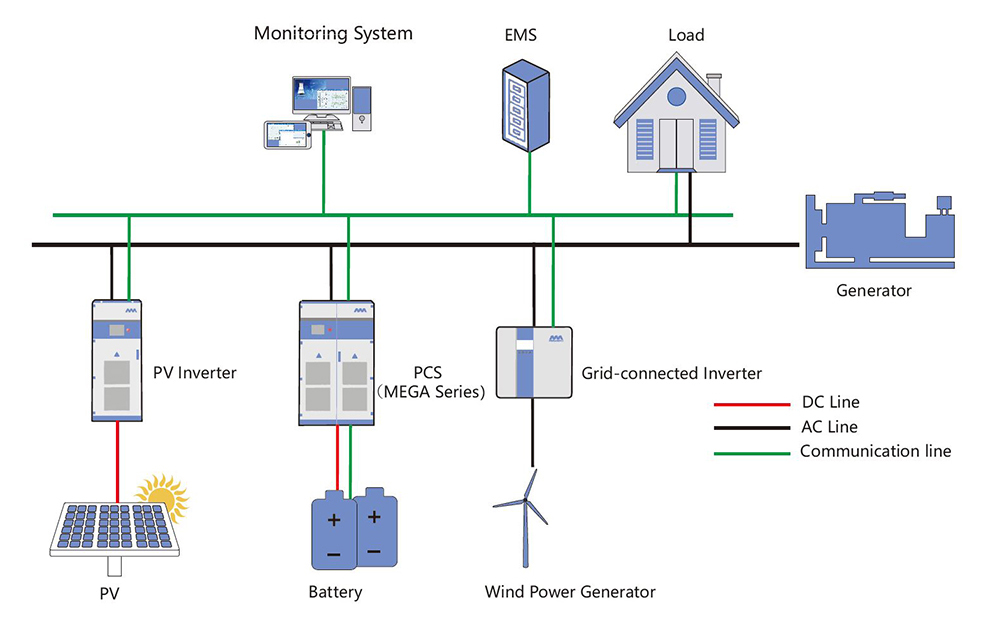The microgrid is a local power generation and distribution system with autonomous control, protection, and management functions, which means it can connect or disconnect from the traditional grid and operate in both grid-connected and island-mode. The energy storage system is an essential part of the microgrid, as it maintains the electricity balance, provides a stable and reliable power supply, and allows for a quick change between island and connected modes.

Monitoring System, EMS, Load, Generator
The energy storage system performs as a stabilizer and adjustor in the power generation of wind, solar, biomass, natural gas, and other renewable energy. Distributed generation of the renewable energy sources connected to the grid will influence the power supply stability, while peak-valley load differences also increase, thus resulting in the need for an energy storage system in the micro grid in order to control the distributed generation and load balance, reduce negative impacts caused by distributed power variations and assist in ancillary services like peak load, frequency and voltage control.

An off-grid microgrid is built in remote areas that are too far from any transmission and distribution infrastructure, but have plenty of solar and wind energy resources. The PV or wind off-grid microgrid with an energy storage system is designed to be energy self-sufficient and will independently supply remote areas with power.